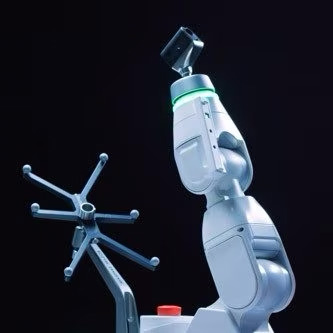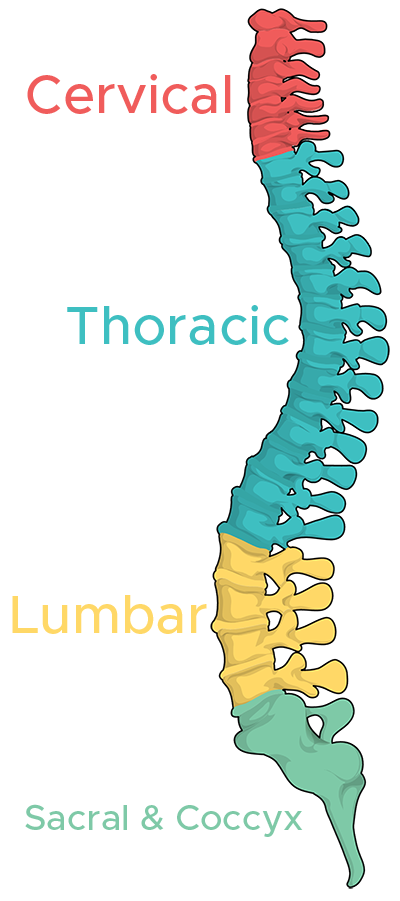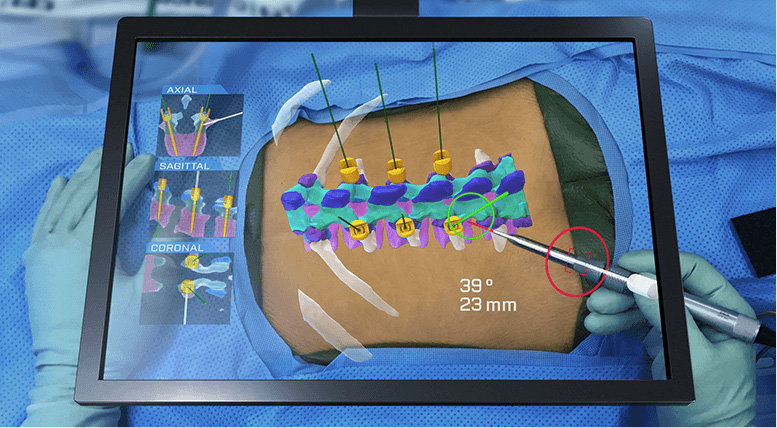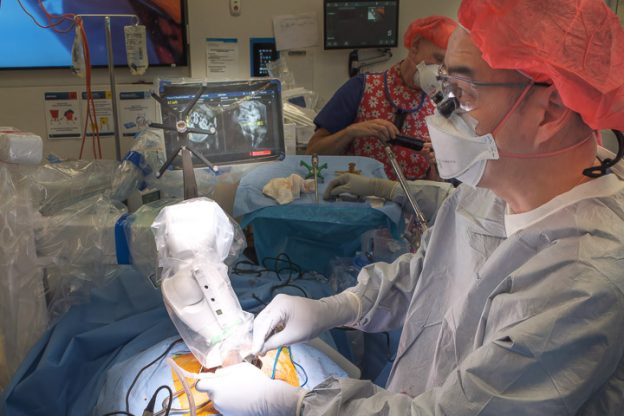KEAT'S BLOG
10 min read
The Pros and Cons of Robotic Surgery
in Spinal Procedures
with references
December 2023
Robotic surgery has many advantages over traditional freehand surgery with a few limitations. We will compare those in this article helping you make an informed decision as to whether robotic surgery is right for you.
Robotic surgery in Australia
Robotic surgery is still a new technology here in Australian hospitals. When it comes to the field of spine surgery, even more so. There are only a handful of surgical robots that specialise in spinal surgery in the whole country and we are lucky to have one of them, right here in Melbourne.
Coincidently a recent news story covered the current situation regarding robotic spine surgery in South Australia. The robot mentioned in this story is very similar to the one I already use at Warringal Hospital.
Australia would benefit immensely by having more robotic technology in spinal surgery. For me, the benefits of this technology are obvious. But it is a dense topic! I have written about robotic spine surgery before, but that article is just a basic overview.
This article in an elaboration on the topic and I hope that you find the information valuable.

A deep dive into the advantages of Robotic Surgery (the pro's)
The advantages of robotic guidance platforms can be broken down into Planning, Predictability and Precision.
Planning
These new robotic systems allow surgeons to take 3D scans during surgery. The surgeon can then use this 3D scan to build a simulation of the patient’s spine and refer to that image for guidance in real time.
It’s pretty amazing.
Preoperative and intraoperative imaging completes the picture, giving the surgeon the most thorough plan possible.
Precision
Robotic assisted surgery in spinal procedures enables greater precision and accuracy over conventional techniques 1,2,3,4.
The robot arm helps guide surgical instruments allowing the surgeon to have even more precise movements. At the same time, the surgeon gets instant information about the placement of implants from the computer monitor. It also provides images of important structures in the body.
This increased precision is particularly useful in complex spinal surgeries. 8,5,7.
Predictability
Imagine you are planning a road trip, but you know there is going to be a lot of traffic ahead. Once upon a time, you might have used a paper street map to find your way. While trusty and reliable, you would not be able to get instant updates like the modern GPS on your smartphone is capable of.
You can think of robotic surgery in a similar way.
As mentioned before, surgeons take as many images as possible prior to surgery to plan the operative procedure. These images make for a trusty road map, but are not easily updated during surgery, say when the patient is positioned differently or once some spinal implants are in place.
Surgical conditions can change in real time, just like traffic conditions change in real time.
Using these images, robotic surgery guidance systems can now track the position of instruments during spinal surgery to help guide the surgeon in real time. It can predict the depth needed for screws and other implants instantly.
Put simply, it gives surgeons more accurate and instant updates during the procedure just like GPS allows us to get instant updates about traffic conditions ahead so we can make changes accordingly.



It is also considered minimally invasive surgery
Minimally invasive surgery, also known as MIS, houses a range of techniques all of which rely on the latest technology and thinking in medicine. For example, endoscopic spine surgery (which Keat is also trained in) is considered minimally invasive surgery. Robotic surgery also falls in to this category.
A few benefits of minimally invasive robotic spine surgery are:
- It allows surgeons to alter their approach as necessary to avoid injury to vital structures;
- The visuals on the screen can help for more informed surgical decision-making. For example, they may be able to make fewer or smaller incisions resulting in a shorter hospital stay for the patient;9,10,11
- Potentially allows for more complex procedures with less fear of serious consequence, as the surgeon has better visibility of where important structures are6,7,8, and;
- Might make for quicker surgeries6,7. Less time in the operating room can potentially lead to fewer surgical complications.
At the end of the day, the goal is to lead to better outcomes and fewer complications for the patient. In best case scenarios we hope robotic surgery leads to less pain, faster recovery times and quicker return to normal function post surgery6.
Potential Risks and Complications of Robotic Surgery (the con's)
The risks and complications of robotic surgery are much the same as any other type of spinal surgery but they are worth knowing. These include:
- Infection. While the risk of infection is generally low in robotic surgery, there is still a risk of infection associated with any surgical procedure.
- Nerve damage. As with any spinal surgery, there is also a risk of nerve damage associated with robotic spine surgery. While there is evidence that robotic spinal surgery carries a decreased risk of surgical injury1, it is still a potential complication to consider.
- Spinal Chord Injury. Again, any type of surgery near the spine carries this risk but robotic surgery is no greater than traditional surgery.1
- Bleeding. Although robotic surgery is generally associated with less blood loss than traditional open surgery5, there is still a risk of bleeding during the procedure.
- Having to transition to freehand technique. In the extremely rare event that a robotic component experiences technical issues during the surgical procedure, it could delay the procedure or require the surgeon to switch to traditional freehand surgery.
- Complications due to general anaesthesia. As with any surgical procedure, there is a risk of complications associated with anaesthesia. Patients should discuss any concerns they may have with their anaesthetist prior to the procedure.
You should also carefully consider the risks and benefits of robotic surgery with your surgeon before making a decision.
Overall though, the hope is these risks and complications will be reduced with the proper use of robotic guided surgery.

Limitations of current Robotic Guidance Platforms for spinal surgery
At the time of writing this article, these robotic guidance platforms are not designed to assist with procedures on the cervical spine. They are limited to the thoracic and lumbar regions of the spine.
Also, current robotic technology does not provide assistance with spinal decompression. Research and technology is currently evolving in this area and we hope to be able to utilise robotic assistance with the decompression aspects of spinal surgery in the future.
Robotic surgical systems and robotic platforms are not yet available at all hospitals or medical centres, and not all surgeons have been trained to use them. This limits the availability of robotic spine surgery for some patients, particularly those who live in more remote areas or who do not have access to specialised medical facilities.
Surgeon skill and training is also a limiting factor when considering robotic spine surgery. Robotic assisted surgery in spinal procedures requires specialised training and expertise for both the surgeon and the operating room staff. If the number of qualified surgeons who can perform the procedure is low, this might increase wait times or again disadvantage people living in remote areas.
What are the downsides of robotic surgery?
There is a high initial purchase cost for hospitals to install one of these systems. Plus given that the technology is so new, there is a lack of clear evidence that outcomes are truly improved.
But even with the limitations listed above, I don’t feel there are any downsides from an operational standpoint.
I have been so impressed by my experiences so far I am looking to use robotic surgery every opportunity I can.
Is robotic surgery for everyone?
Robotic surgery is not for everyone, so please ask your surgeon for a complete list of indications, warnings, precautions, adverse events, clinical results, and other important medical information. Together you will be best suited to decide weather robotic surgery is right for you.
Future Directions in Robotic Surgery
As surgical robotics continues to advance, it is likely to become even more precise, efficient, and effective. Components will also become smaller, cheaper and more widespread making robotic assisted surgery available in more places.
Additionally, the use of artificial intelligence could help improve surgical outcomes by providing real-time feedback to the surgeon during the procedure. One system has already been developed with hopefully more to come.

Personally, I think the real future of robotic spinal surgery will be when it can help with decompression. That will be a game changer!
Conclusion
Robotic surgery in spinal procedures is a promising technology that offers many potential benefits over traditional open surgery, including greater precision and accuracy, smaller incisions, reduced pain and blood loss, and faster recovery times. However, there are also potential drawbacks to consider, including limited availability, cost, and the need for specialised training for both the surgeon and the operating room staff.
Patients considering robotic surgery should carefully weigh the risks and benefits with their doctor and discuss any questions or concerns about robotic procedures they may have. As technology continues to advance, it is likely that robotic surgery will become even more precise, efficient, and effective, making it an even more attractive option for patients in need of spinal procedures.
Sembrano JN, Polly DW, Ledonio CG, Santos ER. Intraoperative 3-dimensional imaging (O-arm) for assessment of pedicle screw position: Does it prevent unacceptable screw placement? International Journal of Spine Surgery 6[1], 49-54. 12-1-2012.
Wood M, Mannion R. A Comparison of CT-based Navigation Techniques for Minimally Invasive Lumbar Pedicle Screw Placement. Journal of Spinal Disorders & Techniques 2011;24(1).
Hodges SD, Eck JC, Newton D. Analysis of CT-based Navigation System for Pedicle Screw Placement. Orthopedics 2012;35(8):e1221-e1224.
Shin MH, Ryu KS, Park CK. Accuracy and safety in pedicle screw placement in the thoracic and lumbar spines: Comparison study between conventional C-arm fluoroscopy and navigation coupled with O-arm (registered trademark) guided methods. J Korean Neurosurg Soc 2012;52(3):204-9.
Sclafani JA, Regev GJ, Webb J, Garfin SR, Kim CW. Use of a quantitative pedicle screw accuracy system to assess new technology: Initial studies on O-arm navigation and its effect on the learning curve of percutaneous pedicle screw insertion. SAS Journal 5[3], 57-62. 9-1-2011.
Asuncion CB, Bezos DR, Garcia PG. [Cost analysis of the use of an operating room with O-arm and navigation]. Spanish Health Economics Conference (AES) – 18th-21st June, Santander, Spain. 2013.
Costa F, Porazzi E, Restelli U, et al. Economic Study: a cost-effectiveness analysis of image-guided systems in spine surgery. GIS Italian Society for Spinal Surgery (Societa Italiana di Chirurgia Vertebrale, Gruppo Italiano Scoliosi GIS) XXXVI National Congress. Bologna, Italy May 16 – 18 2013. 2013.
Burch S, et al. Comparison of radiation exposure to the spine surgeon during pedicle screw placement using the O-arm™ System and StealthStation® Navigation vs. C-arm Standard fluoroscopy. 2010 May. 1-2010 May 1; 2010.
KantelhardtSR,MartinezR,BaerwinkelS,BurgerR,GieseA,RohdeV:Perioperative course and accuracy of screw positioning in conventional, open robotic-guided and percutaneous robotic-guided, pedicle screw placement. Eur Spine J 20:860–868, 2011.
KericN,EumDJ,AfghanyarF,Rachwal-CzyzewiczI,RenovanzM,ConradJ,etal: Evaluation of surgical strategy of conventional vs. percutaneous robot-assisted spinal transpedicular instrumentation in spondylodiscitis. J Robot Surg 11:17–25, 2017.
Kim,H.J.,Jung,W.I.,Chang,B.S.,Lee,C.K.,Kang,K.T.,andYeom,J.S.(2016),A prospective, randomized, controlled trial of robot-assisted vs freehand pedicle screw fixation in spine surgery, Int J Med Robotics Comput Assist Surg, doi: 10.1002/rcs.1779.
At Keat Ooi Surgery we provide the most advanced individualised care plan that is based on established guidelines, latest research and technological advancement.


